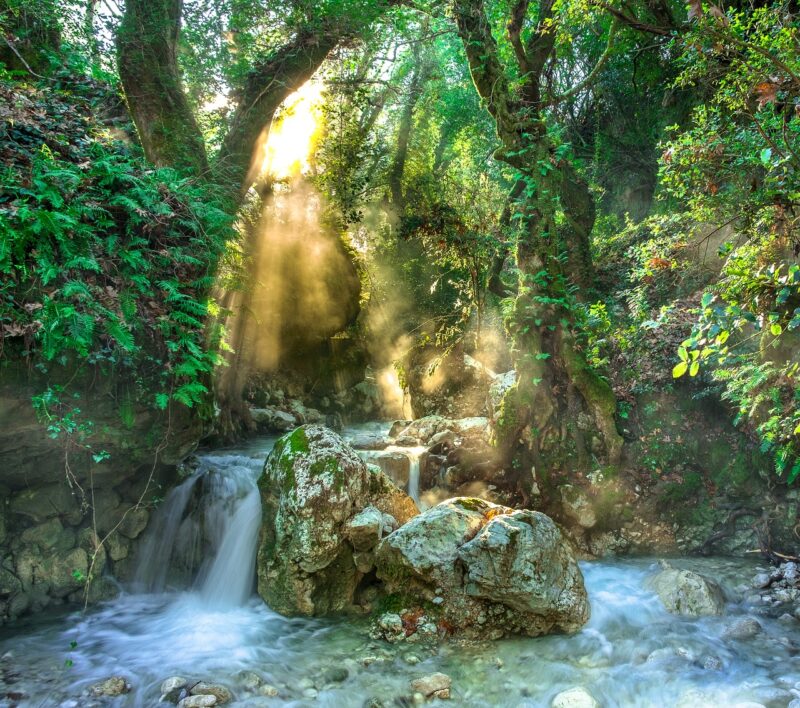Why Rivers Like the Amazon, Nile, and Ganges Hold Mystical and Historical Importance Across Cultures
November 17, 2024

Rivers have always played a crucial role in the development of civilizations. They serve not only as sources of water but also as essential channels for trade, travel, and communication. Many rivers around the world, such as the Amazon, Nile, and Ganges, are steeped in history and rich in cultural significance. Each river is a living testament to the stories, rituals, and traditions of the people that inhabit its banks. This article explores the mystical and historical significance of these iconic rivers across various cultures.
1. The Amazon River: A Living Heart of the Rainforest
The Amazon River, known as the largest river by discharge of water in the world, flows through the Amazon rainforest, which is often referred to as the ‘lungs of the Earth.’ The river stretches over 4,000 miles, weaving through Peru, Colombia, and Brazil, before emptying into the Atlantic Ocean.
Numerous indigenous tribes call the Amazon basin home, each with its own unique relationship with the river. Many tribes view the Amazon as a sacred entity, sharing deep spiritual connections with the waterway. The river is often regarded as a nurturing mother that provides food, shelter, and a source of transportation.
- Cultural Practices: Rituals often take place along the banks of the river, where tribes perform ceremonies that honor the spirits of the water. These practices highlight the bond between the indigenous cultures and the Amazon, offering thanks for its gifts.
- Legends and Myths: The Amazon basin is filled with stories of river spirits, mythological creatures, and ancient gods that influence the daily life and spiritual practices of the local communities. Tales of the “Boto,” a river dolphin believed to transform into a handsome man, are popular among the tribes of the region.
- Environmental Significance: The Amazon plays a vital role in regulating the Earth’s climate, homes to countless species and diverse ecosystems, its protection is a priority for various cultural and environmental movements worldwide.
The mystical reverence for the Amazon showcases not just the river’s importance geographically but also its cultural and spiritual value across civilizations.
2. The Nile River: The Lifeblood of Ancient Egypt
No discussion of historically significant rivers would be complete without mentioning the Nile. Flowing through eleven countries and spanning approximately 4,135 miles, the Nile is celebrated as the longest river in the world. It has been the lifeblood of Egypt for millennia, supporting agricultural societies and influencing the rise of one of the earliest and most profound civilizations in history.
- Agricultural Foundation: The Nile’s annual floods deposited fertile silt along its banks, allowing ancient Egyptians to cultivate crops, sustain their populations, and develop surplus food production. This agricultural success led to the growth of cities like Thebes and Memphis.
- Religious Significance: The river is central to Egyptian mythology, with gods such as Hapi (god of the annual flooding) and Osiris (associated with life and the afterlife) representing its importance in life and death cycles. Ancient temples and shrines were often constructed on its banks to honor these deities.
- Cultural Myths and Traditions: Festivals like the ‘Wepet Renpet’ (the opening of the year) celebrated the flooding of the Nile, symbolizing renewal and fertility. This demonstrates the river’s role not just as a physical entity but a critical aspect of Egyptian culture and religion.
The Nile is woven into the fabric of Egyptian life, symbolizing sustenance, spiritual beliefs, and cultural heritage that continue to resonate today.
3. The Ganges River: Sacred Waters of India
The Ganges River, or Ganga, is considered sacred by millions in India and is one of the most revered rivers in the world. It flows through northern India and Bangladesh, providing water to hundreds of millions of people and sustaining diverse ecosystems.
For Hindus, the Ganges is personified as a goddess, Ganga, and is worshipped as the purifying force of both body and soul.
- Ritualistic Importance: Pilgrims travel from afar to bathe in the river’s waters, believing that it washes away sins and leads to moksha (liberation). The riverbanks, especially at Varanasi and Haridwar, are dotted with ghats (steps leading to the water) where various rituals are performed, from daily prayers to elaborate funerals.
- Festivals and Celebrations: Events like Kumbh Mela attract millions, showcasing the river’s role in fostering unity, spirituality, and tradition within the community. Devotees gather for a collective immersion, seeking blessings and enlightenment.
- Contemporary Challenges: Despite its sacred stature, the Ganges faces significant challenges, including pollution and over-exploitation. The efforts to clean and protect the river illustrate the juxtaposition of reverence for nature and modern environmental issues that various communities confront today.
The Ganges embodies spiritual, cultural, and practical importance in the lives of countless individuals, representing a powerful force that shapes identity and beliefs.
4. The Interconnection of Rivers and Cultures
The reverence for rivers like the Amazon, Nile, and Ganges transcends geographical boundaries, revealing a profound connection among cultures worldwide. Here are a few themes that show the interconnection between rivers and cultural significance:
- Life and Sustenance: Rivers provide essential resources for nourishment, transportation, trade, and commerce, sharing foundational roles in the development of civilizations, from ancient settlements to present-day societies.
- Spirituality and Identity: Many communities see rivers as sacred and central to their spiritual practices. This reflects an innate connection to nature, emphasizing the need for stewardship and respect for environmental health.
- Cultural Narratives and Traditions: Stories and myths surrounding rivers often reflect the values, morals, and beliefs of the cultures they nourish, contributing to a rich tapestry of human history and identity across generations.
Sharing themes of sustenance, spirituality, and storytelling, these rivers serve as vessels of collective memory and cultural identity, connecting humanity to the earth and to one another.
Conclusion: A Call to Respect and Protect
As guardians of history, spirituality, and life itself, rivers like the Amazon, Nile, and Ganges remind us of our collective responsibility to cherish and maintain our natural environments. These waterways are not merely streams of water but living entities that intertwine with human culture, identity, and belief.
In the face of challenges that threaten our rivers, such as pollution, climate change, and over-extraction, it is essential to advocate for their health and preservation. Recognizing the deeper meaning these rivers hold across various cultures not only fosters appreciation but also ignites a passion for the protection of these vital ecosystems.
By embracing sustainable practices and celebrating the traditional knowledge of the communities that depend on rivers, we help ensure their mystical and historical importance continues to thrive for generations to come.







